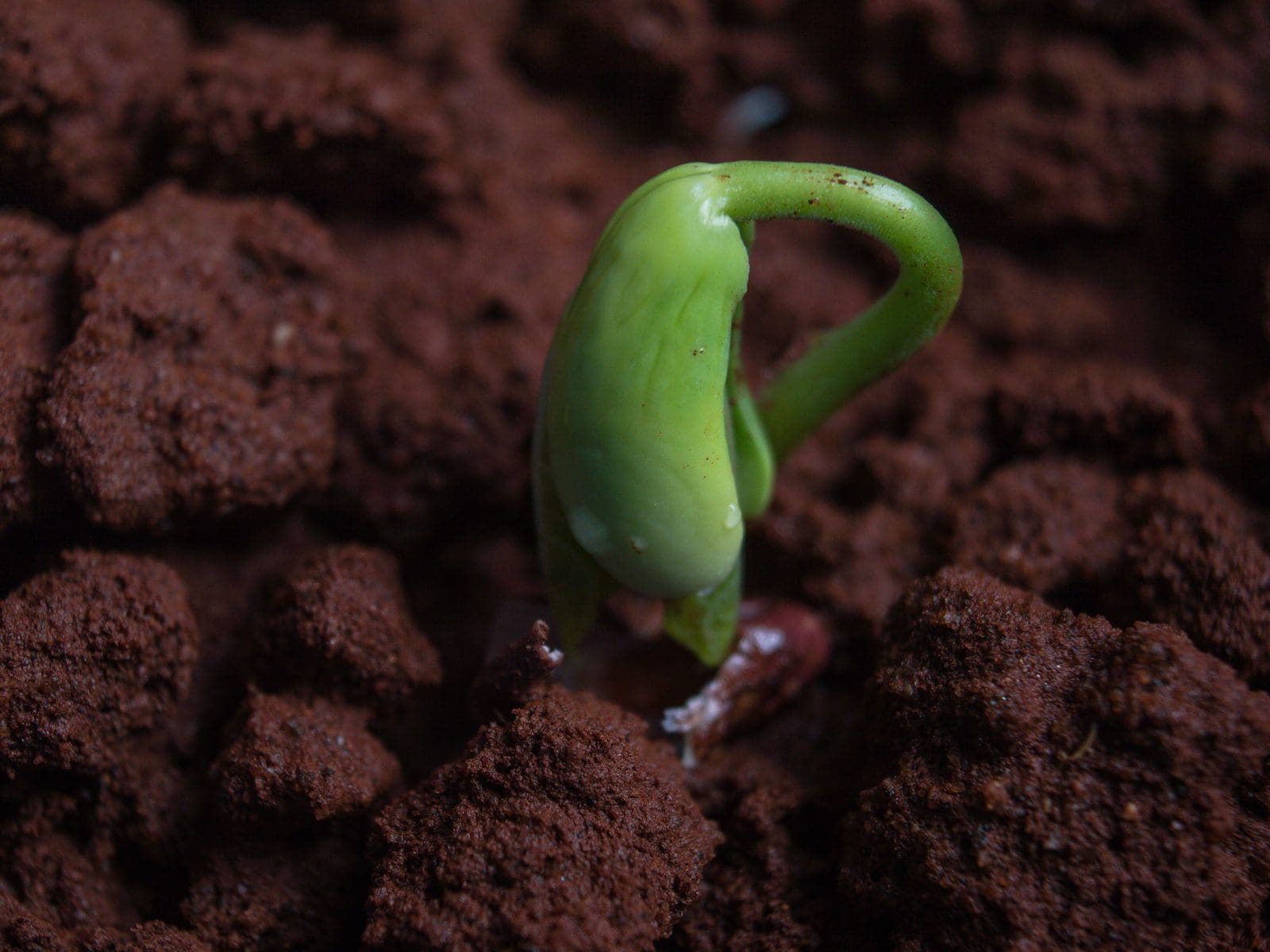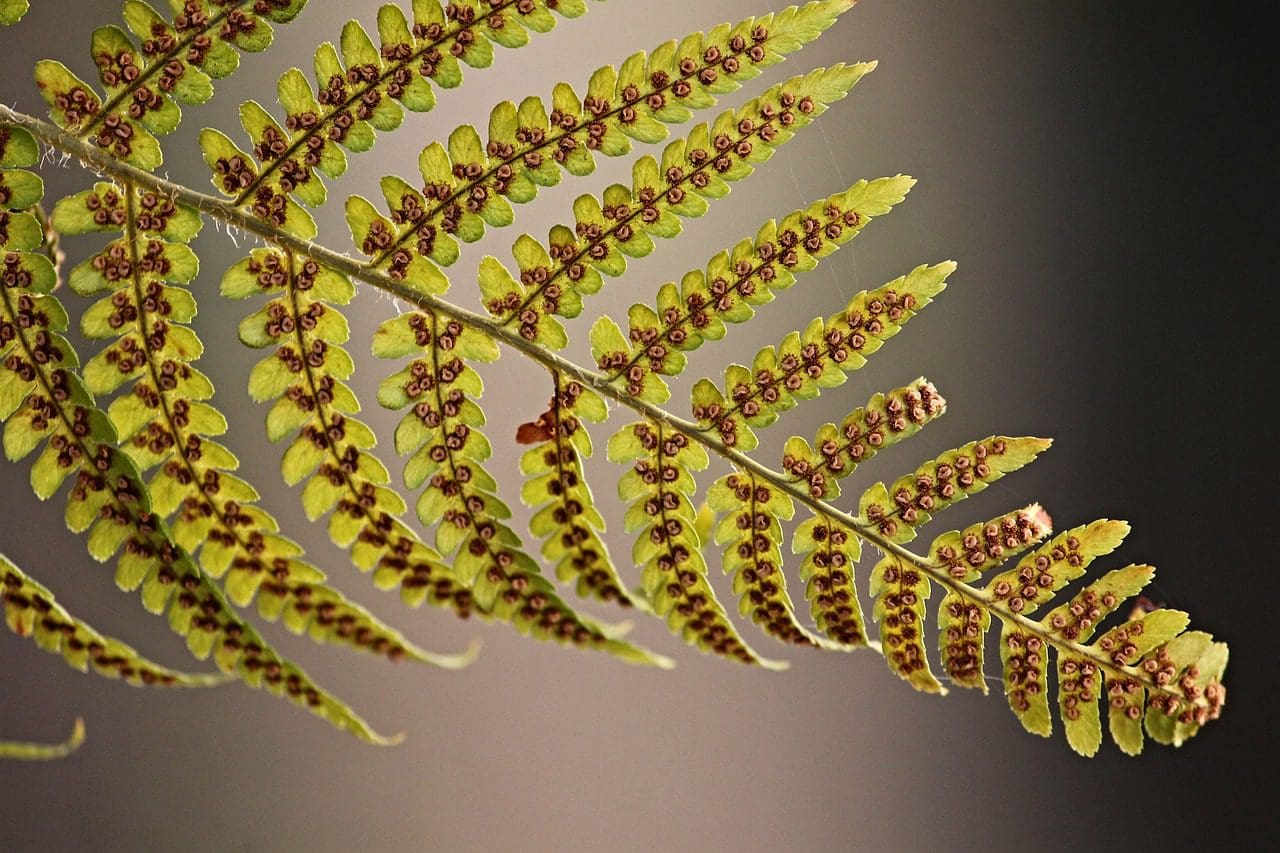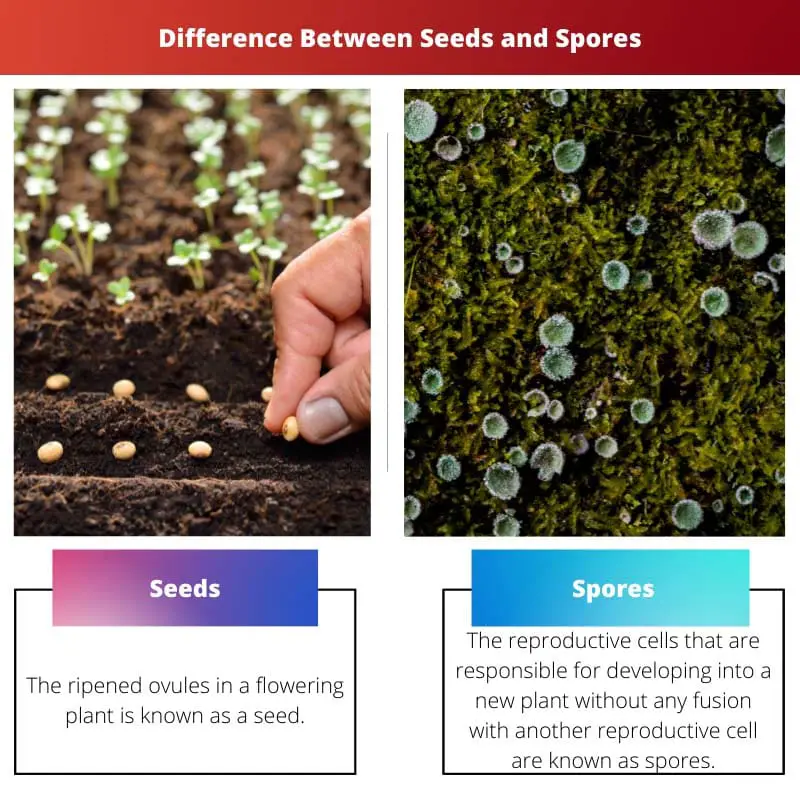Seeds are reproductive structures found in higher plants, enclosed within a protective seed coat, containing an embryo and a supply of nutrients for germination. Spores, on the other hand, are single-celled reproductive structures produced by lower plants like fungi and ferns, serving as a means of dispersal and germination, lacking an embryo and protective seed coat.
Key Takeaways
- Seeds and spores are both reproductive structures of plants that can develop into new individuals.
- Seeds are formed after fertilization and contain an embryo, while spores are produced asexually and do not have an embryo.
- Seeds are larger and have more nutrients than spores, which are smaller and can be produced in larger quantities.
Seeds vs. Spores
Seeds are a reproductive structure produced by flowering plants, containing an embryonic plant and nutrients. A spore is a single reproductive cell produced by many plants, smaller than seeds, and dispersed by wind, water, or other means. It is produced by asexual reproduction, which does not involve the fusion of gametes.

The purpose of both seeds and spores in a plant is similar: to produce new plants, but they are still very different. Spores are of two types that are heterosporous and homosporous. Heterosporous also have two types: small male spores and big female spores.
Seeds also are of two types that are diploid and haploid. The difference between a diploid and a haploid is that a diploid has two sets of paired chromosomes, while a haploid has only one set of paired chromosomes.
Comparison Table
| Feature | Seeds | Spores |
|---|---|---|
| Organisms | Flowering plants (angiosperms) and some gymnosperms (cone-bearing plants) | Fungi, algae, mosses, ferns, liverworts, and some bacteria |
| Number Produced | Fewer, one or a few per fruit | Large numbers, produced in specialized structures |
| Cellular Structure | Multicellular, consisting of an embryo, a seed coat, and an endosperm (nutrient storage) | Unicellular or multicellular with few cells, lacking an embryo and endosperm |
| Reproduction | Result of sexual reproduction (fusion of sperm and egg) | Can be produced through sexual or asexual reproduction |
| Ploidy Level | Diploid (contains two sets of chromosomes) | Haploid (contains one set of chromosomes) |
| Dispersal Method | Animals (wind, water, or by being eaten), wind, or self-propulsion | Wind, water, or through attachment to animals and clothing |
| Germination Requirements | Less specific, requiring moisture and favorable temperatures | More specific, requiring specific environmental conditions like high humidity |
| Survival Rate | Higher due to presence of stored food and protective seed coat | Lower, as they lack food reserves and are more susceptible to harsh conditions |
What is Seed?
A seed is a complex reproductive structure found in higher plants, encompassing various tissues and structures crucial for plant propagation and survival.
Structure of a Seed
- Seed Coat (Testa):
- The outermost layer of the seed, providing protection against mechanical damage, pathogens, and desiccation during dormancy and germination.
- Composed of one or more layers of cells, thick and impermeable.
- Embryo:
- The miniature plant within the seed, consisting of the embryonic shoot (plumule), embryonic root (radicle), and one or more cotyledons (seed leaves).
- The embryo develops from the fertilized ovule and contains the genetic information necessary for plant growth and development.
- Endosperm:
- A nutritive tissue surrounding the embryo in some seeds, providing stored energy and nutrients for the developing seedling.
- Formed from the triploid endosperm nucleus resulting from double fertilization in angiosperms.
- Cotyledons:
- Seed leaves that may function as storage organs or absorb nutrients from the endosperm during germination.
- Monocotyledonous seeds have one cotyledon, while dicotyledonous seeds have two.
- Seed Embryo Axis:
- The region between the embryonic shoot and root, containing the embryonic stem (hypocotyl) and embryonic root (radicle).
- It serves as the axis around which the seedling develops during germination.
- Storage Tissues:
- In some seeds, such as legumes, the cotyledons or endosperm store reserves of carbohydrates, proteins, and lipids essential for germination and initial growth.
Functions of Seeds
- Propagation: Seeds are vital for the reproduction and dispersal of higher plants, enabling the establishment of new individuals in diverse habitats.
- Survival: Seeds provide a protective environment and a reservoir of nutrients for the developing embryo, ensuring the survival and successful germination of the plant.
- Adaptation: Seeds exhibit various adaptations for dispersal, including wind, water, animals, or mechanical means, allowing plants to colonize new environments and exploit diverse ecological niches.

What is Spore?
A spore is a specialized reproductive structure produced by certain organisms, including fungi, plants, and some bacteria, facilitating dispersal and ensuring survival in diverse environmental conditions.
Structure of a Spore
- Spore Wall:
- The outermost layer of the spore, providing protection against desiccation, mechanical damage, and environmental stresses.
- Composed of complex materials such as chitin in fungi, sporopollenin in plants, or peptidoglycan in bacterial endospores, contributing to resilience.
- Cytoplasm:
- The inner contents of the spore, containing essential organelles for metabolic processes and genetic material for reproduction.
- May include reserve nutrients required for spore viability and subsequent germination.
- Genetic Material:
- The nucleus within the spore carries the genetic information necessary for the development of a new individual upon germination.
- Spores are haploid, containing a single set of chromosomes, although variations exist depending on the organism.
- Specialized Structures (optional):
- Some spores possess additional structures for dispersal or attachment, such as appendages, wings, or mucilaginous coatings, aiding in transportation and colonization.
Functions of Spores
- Dispersal: Spores are lightweight and small, facilitating their dispersal over long distances by various means such as wind, water, animals, or human activity.
- Propagation: Spores serve as reproductive units capable of germinating under suitable conditions to produce new individuals, enabling the colonization of new habitats.
- Survival: Spores exhibit remarkable resistance to adverse environmental conditions, including extreme temperatures, desiccation, and exposure to chemicals or radiation, ensuring long-term survival until favorable conditions for germination occur.
Types of Spores
- Fungal Spores:
- Produced by fungi through asexual or sexual reproduction, contributing to fungal dispersal, reproduction, and adaptation to changing environments.
- Examples include conidia, basidiospores, ascospores, and zygospores, each formed through distinct reproductive mechanisms.
- Plant Spores:
- Produced by lower plants such as mosses, ferns, and algae, as part of their life cycles involving alternation of generations.
- Plant spores are produced in specialized structures such as sporangia and serve as the starting point for the development of gametophytes.
- Bacterial Spores:
- Produced by certain bacteria as a survival mechanism under unfavorable conditions, allowing them to enter a dormant state until conditions improve.
- Bacterial spores, such as endospores produced by Bacillus and Clostridium species, are highly resistant and can withstand extreme heat, radiation, and chemical disinfectants.

Main Differences Between Seeds and Spores
- Origin and Production:
- Seeds are produced by higher plants (gymnosperms and angiosperms) as a result of sexual reproduction.
- Spores are produced by various lower plants (such as mosses, ferns, and algae), fungi, and some bacteria through both sexual and asexual reproduction.
- Structure:
- Seeds are complex structures consisting of an embryo, seed coat, and endosperm or cotyledons.
- Spores are comparatively simpler structures, consisting of a protective outer layer (spore wall) surrounding genetic material and essential organelles.
- Function:
- Seeds serve as reproductive units capable of germinating into new plants, providing protection and nourishment to the developing embryo.
- Spores serve as dispersal units, facilitating the spread of the organism to new habitats, and can remain dormant until suitable conditions for germination occur.
- Type of Organisms:
- Seeds are characteristic of higher plants, including gymnosperms (e.g., conifers) and angiosperms (e.g., flowering plants).
- Spores are found in lower plants such as mosses, ferns, and algae, as well as fungi and certain bacteria.
- Genetic Material:
- Seeds contain the embryo, which carries the genetic information necessary for the development of the new plant.
- Spores also contain genetic material but represent a single set of chromosomes (haploid), whereas seeds may contain a diploid embryo.
- Reproductive Mechanisms:
- Seeds are primarily produced through sexual reproduction, involving the fusion of male and female gametes.
- Spores can be produced through both sexual and asexual reproduction, depending on the organism, and may involve processes such as meiosis or mitosis.



